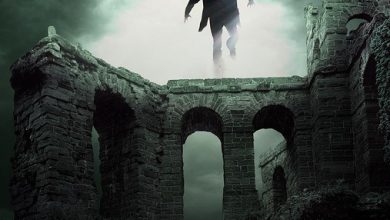
Here are some book club questions for Demon Copperhead by Barbara Kingsolver. While some are general questions that may be used as a cue for readers to respond to, we have also presented a list of specific questions from Demon Copperhead along with responses to the same.
Book Club Questions for Demon Copperhead
Discussion Questions
- Discuss the theme of redemption and second chances in the novel. Which characters experience redemption, and what leads to their transformation?
- How do characters like Miss Barks, Tommy, and Angus provide support and guidance to Demon in different phases of his life?
- Demon’s journey involves multiple instances of loss and grief, from his mother’s struggles to the loss of loved ones. How do these experiences shape Demon’s character and his choices throughout the narrative?
- How does the character of Betsy Woodall, Demon’s grandmother, challenge traditional gender roles and expectations, and what impact does her unconventional approach to raising children have on Demon and the story as a whole?
- How effectively does the book capture the authenticity of characters from diverse backgrounds? Can you pinpoint instances in the novel where this authenticity shines through, and are there moments where it may fall short?
Demon Copperhead | Question & Answers
● Demon Copperhead opens with the memorable line “First, I got myself born,”. What is the significance of this line? How does it relate to the opening line of David Copperfield?
“First, I got myself born,” bears significance by directly pointing out the beginning of Demon’s life journey and the agency he exercises in navigating the challenges that follow. This line sets the tone for the narrative, emphasizing Demon’s role as the protagonist and his determination to shape his own destiny despite the adverse circumstances of his birth.
In contrast, the opening line of Charles Dickens’ “David Copperfield,” “It’s in vain to recall the past, unless it works some influence upon the present,” serves as a thematic anchor for Demon Copperhead. Kingsolver uses this quote to also highlight the importance of acknowledging and learning from the past to effect positive change in the present. By reimagining Dickens’ classic tale in a contemporary Appalachian setting, the writer draws parallels between different societies and uses the foundation set by Charles Dickens to explore how economic disparities persist across time and place.
● Through Demon’s journey and the interconnected lives of the characters, Kingsolver demonstrates the resilience of communities in the face of systemic challenges, emphasizing the need for societal improvement and the influence of the past on the present.
Kingsolver masterfully illustrates the resilience of communities facing systemic challenges, echoing the timeless theme from Dickens’ “David Copperfield.” Demon’s journey from adversity to personal growth exemplifies resilience, engaging with the fact that the past doesn’t determine one’s future or confine them to a predetermined destiny. The Peggots’ unwavering support and nurturing create a sense of belonging, showcasing the community’s compassion. Emmy’s experience and addiction struggles highlight systemic issues, emphasizing the need for change. June’s activism against pharmaceutical corporations reflects the community’s collective efforts for justice. Tommy’s journalism sheds light on challenges, emphasizing awareness. Coach and Angus serve as mentors and stand against predatory forces, while the McCobbs, despite their struggles, show empathy and solidarity.
Through Demon’s journey and the intricately woven lives of the characters, the novel navigates the complexities of addiction, economic disparities, and personal trials, highlighting the need for collective action and societal improvement. She also highlights the enduring influence of the past on the present, emphasizing the need to confront and learn from historical injustices to effect positive change.
● What is the significance of the name Demon Copperhead? Explain how it is linked to the idea of “destiny” in the life of Damon Fields.
“Demon” suggests a sense of otherness and uniqueness, setting the protagonist apart from his surroundings. His distinctive name reflects his unconventional birth and upbringing, emphasizing his individuality and resilience. The use of “Copperhead” is a direct nod to his father’s unusual hair color, linking him to his mysterious family history. One can also interpret the name in the context of destiny, Demon’s name represents a blend of fate and choice. While he may be bound by his family’s troubled legacy, he has the agency to determine his own path, much like the copperhead snake, which can be dangerous but also elusive and adaptable.
● Elucidate how Barbara Kingsolver brings out the politics of foster care system and its socio-economic impact in the 90s Appalachia.
Through Demon’s experiences, readers witness the flaws and vulnerabilities of the foster care system, exposing how economic disparities and institutional deficiencies can perpetuate a cycle of instability and hardship. The writer depicts characters like Stoner who uses his influence over Demon’s mother, taking advantage of her low-wage job at Walmart to exert control over her and, by extension, Demon. Her job likewise reflects the harsh reality faced by many families in the region, where low-wage employment barely provides for basic needs.
The politics is further illustrated through Stoner’s ability to manipulate the situation, such as lodging a complaint against the Peggots to undermine their ability to care for Demon, showcasing the system’s vulnerabilities. This lack of oversight allows individuals like Stoner to use it for their own gain, highlighting the systemic flaws that perpetuate instability and vulnerability for foster children. Economic instability, addiction, and inadequate support systems contribute to the vicious cycle of ineffective foster care, reinforcing the notion that poverty and systemic issues are key factors in the struggles faced by many families in the region.
● Explore the link between teenage drug abuse and broken families by analysing two characters from Demon Copperhead.
Demons’ family’s narrative is one of addiction, instability, and trauma, particularly embodied by his mother’s ongoing struggle with substance abuse. This early exposure to drug use within his household can normalize the behavior and diminish the perceived risks associated with it, contributing to his susceptibility. Furthermore, the lack of emotional support and the absence of a stable, nurturing environment during his upbringing deprive Demon of the necessary emotional security needed for resilience. This deficiency leaves him prone to seeking comfort and escape from drugs when life’s challenges arise. Without healthy coping mechanisms and role models to navigate adversity, Demon’s family history leaves him ill-equipped to withstand the allure of drugs, especially when influenced by his social group like his girlfriend, Dori. Similarly, Dori’s character mirrors Demon’s experiences. She, too, hails from a family marked by trauma and instability. The death of her father and her family’s inability to offer emotional support leave Dori grappling with profound emotional pain. In response to the broken familial bonds and the loss she endures, Dori turns to drugs as a means of escape and self-medication.
The novel illustrates how broken families can create fertile ground for teenage drug abuse. The absence of stable role models, emotional support, and a nurturing environment can drive young individuals to seek solace in drugs as a way to cope with their pain and fill the emotional void left by their fractured families.
● Bring out the complexity of Demon’s relationship with his mother. How does it evolve and what are its impacts? Discuss the redeeming features of the mother.
In the early years, Demon’s relationship with his mother is characterized by fragility and dependence. Demon’s birth itself is marked by the peculiarity of his mother’s unconsciousness, foreshadowing the instability of their situation. During his childhood, his mother is in and out of rehab however is also illustrated by Demons’ dependence on her for care and stability amid the chaos of their life in the trailer park. As Demon enters adolescence, strains begin to surface in their relationship. The introduction of Stoner, his mother’s contentious boyfriend, intensifies the discord. This phase of their relationship is marked by Demon’s growing sense of alienation and apprehension as he realizes that he occupies an unwelcome space in Stoner’s perspective.
Despite its complexities, Demon’s relationship with his mother serves as a central element in the story, highlighting the multifaceted nature of familial bonds and their enduring impact on an individual’s life. Despite her struggles with addiction, Demon’s mother repeatedly seeks help and enters rehabilitation programs. Her willingness to acknowledge her problem and make efforts to overcome it reflects her desire to provide a better life for her child. Her love is a constant thread in Demon’s life, and it serves as a source of emotional connection for him.
● Delineate the characters of Demon and Maggot and how it impacts their friendship as the two boys grow up.
Demon is depicted as a sensitive and introspective young boy from the very beginning of the narrative. His resilience in the face of adversity becomes evident, and he learns to navigate the challenges of his troubled family life and the foster care system. Maggot is Demon’s closest companion and a resident of the Peggots’ household due to his mother’s incarceration. Maggot’s character is marked by a free-spirited and adventurous nature. Despite his mischievous tendencies, Maggot is depicted as a loyal and caring friend who shares Demon’s youthful exploits and adventures.
As the two boys grow up, their bond deepens through their Demon’s regular visits to the Peggot household and their escapades in the verdant wilderness of southwest Virginia. However, their paths diverge and they meet after several years, when Demon struggles with drug addiction and Maggot faces legal trouble, they become pillars of strength for each other. Their shared history and enduring friendship provide a source of solace and a reminder of the resilience they have developed over the years.
● Lee County and Demon Copperhead are in many ways mirror images of each other. Discuss.
Lee County, as depicted in the story, is a region marked by economic disparities and limited opportunities. It is a place where poverty and opioid addiction cast a long shadow over its residents. Demon Copperhead, the protagonist, is born into this challenging environment within its trailer park. His family’s struggles with financial constraints and addiction parallel the economic disparities and addiction issues prevalent in the region. Demon’s journey becomes a reflection of the community’s struggles and aspirations. Both Lee County and Demon Fields embody the spirit of resilience. Despite the daunting odds, the people of Lee County strive for better lives, attempting to overcome addiction and seek meaningful connections.
● Explore the manner in which Lee County has been abused by the powers that be by drawing upon the painkiller epidemic that besets the place.
Lee County served as a microcosm of the broader issue of economic exploitation and the devastating consequences of the painkiller epidemic. The county becomes a symbol of how marginalized communities are abused by powerful entities. Pharmaceutical companies flooded the region with painkillers, taking advantage of economic hardships and creating a cycle of addiction. This exploitation exacerbated existing socio-economic disparities, as individuals became ensnared in addiction due to the over-prescription of pain medication.
The painkiller epidemic serves as a poignant reflection of how economic interests can supersede human welfare. Lee County, with its struggling population, became a target for profit-seeking pharmaceutical companies. The consequences are far-reaching, leading to addiction, broken families, and a pervasive loss of human dignity.
● What is the link between addiction and human dignity? How can the road to recovery be made smoother? Discuss in relation to the ending of the novel.
Addiction often erodes an individual’s sense of self-worth and autonomy. Demon’s own struggle with drug addiction exemplifies this, as he grapples with a loss of control and self-respect. The characters in the novel, including Demon’s mother, Emmy, and Maggot, all experience the dehumanizing effects of addiction.
The ending of the novel offers a glimpse of hope and redemption, which also illustrates that the road to recovery can indeed be traversed. Through Demon’s journey, we witness his gradual reclamation of dignity as he seeks sobriety, rebuilds relationships, undergoes personal growth, and even finds solace in artistic expression. The supportive community surrounding him exemplifies the importance of empathy and understanding in smoothing the path to recovery. This narrative arc underscores the notion that while addiction may dim one’s sense of dignity, it is not irretrievably lost.
● The narrative voice of Demon Copperhead is what makes the novel believable. Elucidate.
The narrative voice used by the writer is characterized by its raw and unfiltered portrayal of the characters and their struggles. The first-person perspective, narrated by Demon himself, allows readers to delve deep into his psyche, experiencing his pain, hopes, and growth firsthand. Demon’s voice is believable because it reflects the complexity of his emotions and the authenticity of his experiences. It does not shy away from harsh wordings but rather focuses on introspection which humanizes the characters and enables readers to relate and connect with their journey on a visceral level.



